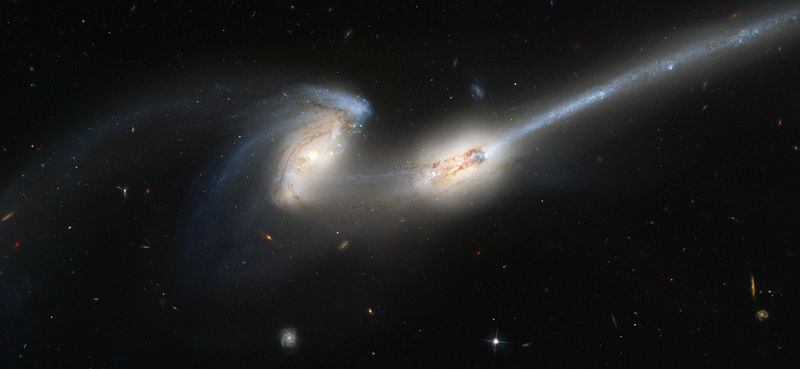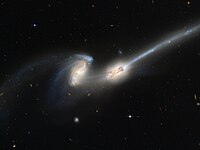Fáìlì:NGC4676.jpg

Ìtóbi ìkọ́yẹ̀wò yìí: 800 × 369 pixels. Àwọn ìgbéhàn míràn: 320 × 148 pixels | 640 × 295 pixels | 1,024 × 473 pixels | 1,280 × 591 pixels | 2,843 × 1,312 pixels.
Fáìlì àtìbẹ̀rẹ̀ (2,843 × 1,312 pixel, ìtóbi faili: 402 KB, irú MIME: image/jpeg)
Ìtàn fáìlì
Ẹ kan kliki lórí ọjọ́ọdún/àkókò kan láti wo fáìlì ọ̀ún bó ṣe hàn ní àkókò na.
| Ọjọ́ọdún/Àkókò | Àwòrán kékeré | Àwọn ìwọ̀n | Oníṣe | Àríwí | |
|---|---|---|---|---|---|
| lọ́wọ́ | 07:06, 28 Oṣù Kínní 2006 |  | 2,843 × 1,312 (402 KB) | Zeimusu | NGC 4676, The Mice galaxies. A pair of colliding galaxies. Taken by the Hubble Space Telescope. From [http://antwrp.gsfc.nasa.gov/apod/ap040612.html APOD, 2004-06-12] Category:NGC objects Category:Galaxies |
Ìlò fáìlì
Ojúewé kan yìí únlo fáìlì yí:
Ìlò fáìlì káàkiri
Àwọn wiki míràn wọ̀nyí lo fáìlì yìí:
- Ìlò ní af.wikipedia.org
- Ìlò ní ar.wikipedia.org
- Ìlò ní arz.wikipedia.org
- Ìlò ní ast.wikipedia.org
- Ìlò ní az.wikipedia.org
- Ìlò ní be.wikipedia.org
- Ìlò ní bg.wikipedia.org
- Ìlò ní br.wikipedia.org
- Ìlò ní ca.wikipedia.org
- Ìlò ní ce.wikipedia.org
- Ìlò ní crh.wikipedia.org
- Ìlò ní cv.wikipedia.org
- Ìlò ní de.wikipedia.org
- Ìlò ní de.wikibooks.org
- Ìlò ní diq.wikipedia.org
- Ìlò ní el.wikipedia.org
- Ìlò ní en.wikipedia.org
Ìfihàn ìlò míràn púpọ̀ fún fálì yìí.


